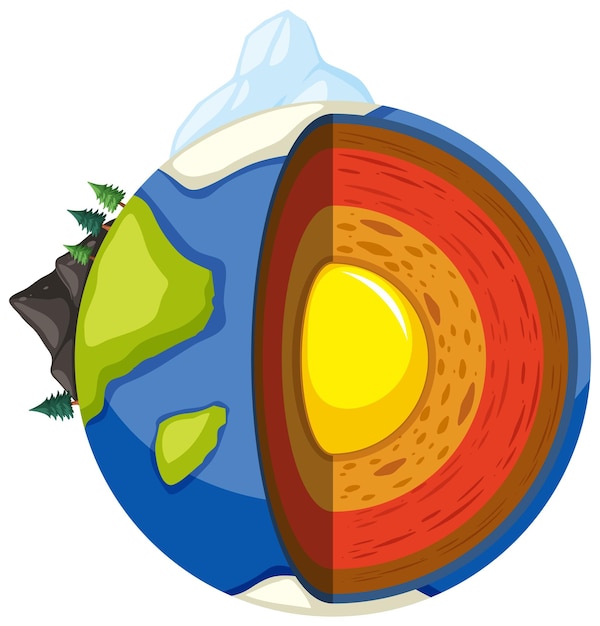Fascinating Facts about Plate Tectonics

The Earth’s lithosphere is divided into several tectonic plates.
Plate tectonics is responsible for shaping the Earth’s surface over millions of years.
The movement of tectonic plates can cause earthquakes and volcanic eruptions.
The theory of plate tectonics was first proposed by Alfred Wegener in the early 20th century.
The Atlantic Ocean is expanding due to the movement of tectonic plates.
The Pacific Ring of Fire is a region where many tectonic plates meet, resulting in frequent volcanic activity.
The Himalayas were formed as a result of the collision between the Indian and Eurasian plates.
The San Andreas Fault in California is an example of a transform plate boundary.
The movement of tectonic plates can create new mountains and destroy old ones.
The process of subduction occurs when one tectonic plate is forced beneath another.
The Mid-Atlantic Ridge is an underwater mountain range where new oceanic crust is formed.
The movement of tectonic plates can cause the formation of oceanic trenches.
Plate tectonics is a key factor in the distribution of earthquakes and volcanic activity around the world.
The movement of tectonic plates can also affect climate patterns.
The shift of tectonic plates is believed to have played a role in the extinction of dinosaurs.
The Earth’s lithosphere is divided into seven major and several minor tectonic plates.
Fascinating Facts about Plate Tectonics part 2
The study of plate tectonics helps scientists understand the formation of natural resources such as oil and gas.
Tectonic plate movement can result in the formation of rift valleys and mountain ranges.
The movement of tectonic plates can lead to the creation of new islands.
Plate tectonics is an ongoing process that continues to shape the Earth’s surface.
The theory of plate tectonics has revolutionized the field of geology.
The movement of tectonic plates is driven by the convective currents in the Earth’s mantle.
The movement of tectonic plates can cause the formation of deep-sea trenches.
The study of plate tectonics has helped explain the distribution of different species around the world.
The Pacific Plate is the largest tectonic plate on Earth.
The process of seafloor spreading occurs at divergent plate boundaries.
The movement of tectonic plates has led to the separation of continents over millions of years.
The theory of plate tectonics provides evidence for the existence of an ancient supercontinent called Pangaea.
Plate tectonics is responsible for the formation of many geological features, including faults and folds.
The Great Rift Valley in Africa is an example of a divergent plate boundary.
The movement of tectonic plates can cause the formation of volcanic arcs.
The study of plate tectonics has allowed scientists to accurately predict the location of earthquakes.
The movement of tectonic plates can result in the formation of hotspots, such as the Hawaiian Islands.
The process of continental drift is a result of plate tectonic movement.
The movement of tectonic plates can cause changes in sea levels over long periods of time.
Plate tectonics is responsible for the formation of many geological resources, such as coal and copper.
The Nazca Plate is responsible for the formation of the Andes Mountains in South America.
Plate tectonics is an example of a dynamic Earth system.
The movement of tectonic plates has shaped the Earth’s climate throughout history.
The study of plate tectonics has helped scientists understand the history of past geological events.
The movement of tectonic plates can cause the formation of rift zones, such as the East African Rift.
Plate tectonics is an example of how the Earth’s interior continues to influence its surface.
The process of plate tectonics occurs at a relatively slow rate, with plates moving only a few centimeters per year.
The movement of tectonic plates can lead to the formation of one large supercontinent followed by its eventual breakup.
Plate tectonics is a fundamental concept in understanding the geology and natural history of the Earth.

